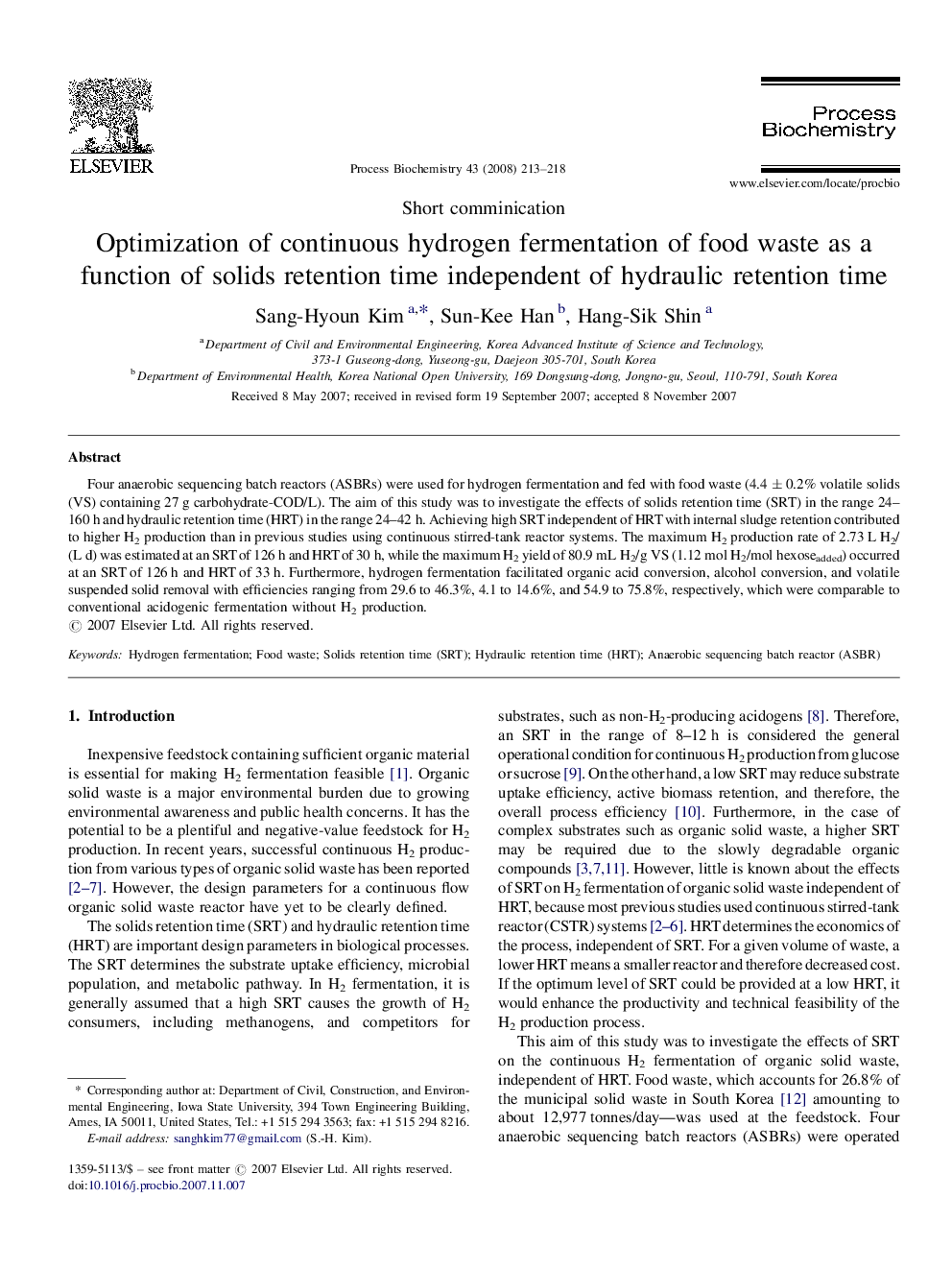| Article ID | Journal | Published Year | Pages | File Type |
|---|---|---|---|---|
| 35595 | Process Biochemistry | 2008 | 6 Pages |
Four anaerobic sequencing batch reactors (ASBRs) were used for hydrogen fermentation and fed with food waste (4.4 ± 0.2% volatile solids (VS) containing 27 g carbohydrate-COD/L). The aim of this study was to investigate the effects of solids retention time (SRT) in the range 24–160 h and hydraulic retention time (HRT) in the range 24–42 h. Achieving high SRT independent of HRT with internal sludge retention contributed to higher H2 production than in previous studies using continuous stirred-tank reactor systems. The maximum H2 production rate of 2.73 L H2/(L d) was estimated at an SRT of 126 h and HRT of 30 h, while the maximum H2 yield of 80.9 mL H2/g VS (1.12 mol H2/mol hexoseadded) occurred at an SRT of 126 h and HRT of 33 h. Furthermore, hydrogen fermentation facilitated organic acid conversion, alcohol conversion, and volatile suspended solid removal with efficiencies ranging from 29.6 to 46.3%, 4.1 to 14.6%, and 54.9 to 75.8%, respectively, which were comparable to conventional acidogenic fermentation without H2 production.
